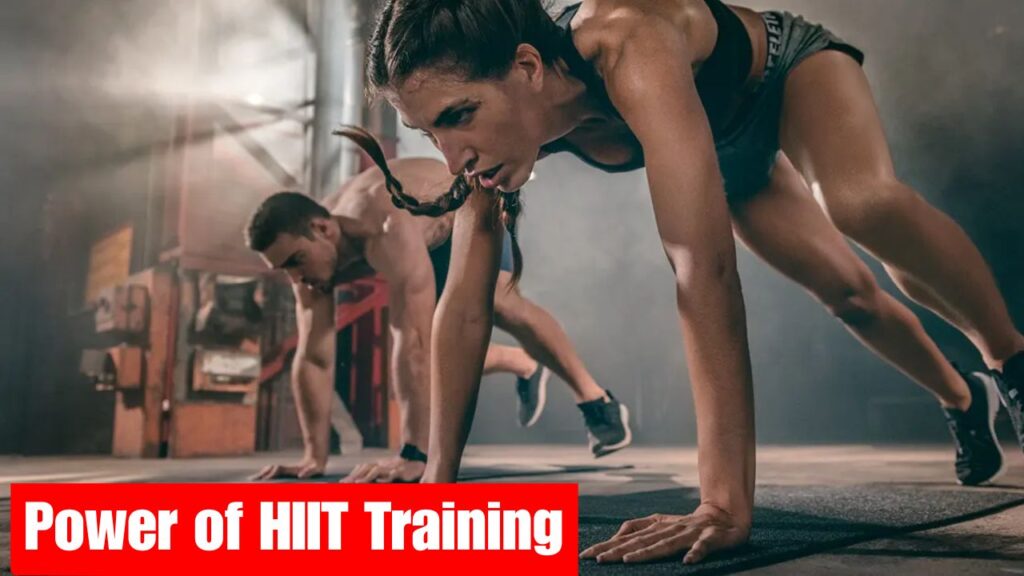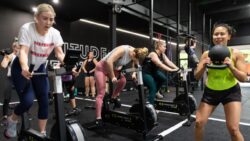Science Behind High-Intensity Workouts – High-intensity interval training (HIIT) has become one of the most effective fitness trends in Australia, helping individuals burn fat, build strength, and improve overall endurance. Known for its quick yet powerful sessions, HIIT combines short bursts of intense exercise with rest or low-intensity intervals. Many Australians are now adopting this method due to its time efficiency and visible results. Whether your goal is fat loss, muscle tone, or improved heart health, understanding the science behind HIIT can help you train smarter and achieve better results in less time.

Understanding High-Intensity Training for Australian Fitness Enthusiasts
High-intensity training has become increasingly popular among Australian fitness enthusiasts who seek efficient workouts that deliver real results. This form of exercise pushes the body close to its maximum effort, leading to greater calorie burn even after the workout ends. Known as the “afterburn effect,” it allows Australians to continue burning fat for hours. By combining exercises like sprinting, burpees, and kettlebell swings, participants enhance cardiovascular endurance while preserving lean muscle. Fitness experts across Australia recommend starting with 20–30-minute HIIT sessions, gradually increasing intensity as stamina improves for long-term benefits.
The Science of HIIT and its Impact on Australian Athletes
For Australian athletes, HIIT offers a scientifically proven way to enhance performance and endurance. The principle behind it lies in stimulating both aerobic and anaerobic energy systems, improving oxygen use and muscle power simultaneously. This makes HIIT ideal for sports professionals and everyday Australians aiming to boost metabolism and build strength efficiently. Studies show that consistent HIIT sessions increase mitochondrial density, allowing better energy conversion and reduced fatigue. From Sydney’s gyms to Melbourne’s outdoor parks, HIIT has transformed how Australians approach modern fitness by integrating science-driven techniques into everyday routines.
| Workout Type | Duration | Calories Burned | Rest Time | Frequency (Weekly) |
|---|---|---|---|---|
| Sprint Intervals | 20 minutes | 250–400 kcal | 30 sec | 3–4 times |
| Bodyweight Circuits | 25 minutes | 200–350 kcal | 45 sec | 3 times |
| Tabata Training | 15 minutes | 150–300 kcal | 20 sec | 4–5 times |
| Strength HIIT | 30 minutes | 300–450 kcal | 60 sec | 2–3 times |
| Endurance HIIT | 35 minutes | 400–600 kcal | 30 sec | 2 times |
How Australian Citizens Can Maximise HIIT Benefits
Australian citizens can maximise their HIIT results by focusing on consistency, form, and recovery. Short but intense sessions can quickly lead to fatigue if not done correctly, so maintaining proper technique and rest is crucial. Nutrition also plays a significant role — combining HIIT with a balanced diet rich in proteins and complex carbohydrates helps the body recover faster and build lean muscle. Many Australians incorporate HIIT into their morning or lunch-hour routines to fit their busy lifestyles. Tracking progress using heart-rate monitors or fitness apps ensures continuous improvement and prevents overtraining.
Effective HIIT Strategies for Australians Looking to Improve Strength
Australians aiming to enhance strength through HIIT can follow strategic routines that combine resistance and cardio elements. Incorporating dumbbells, resistance bands, or kettlebells adds intensity, helping build both muscle and endurance simultaneously. Experts suggest alternating between lower and upper body exercises for balanced results. For example, pair squats with push-ups, or lunges with mountain climbers, to target multiple muscle groups effectively. Consistency, proper hydration, and adequate sleep are key factors that support strength growth and performance recovery for Australians engaging in regular HIIT sessions.
Frequently Asked Questions (FAQs)
1. How often should Australians do HIIT workouts?
Australians can safely perform HIIT workouts three to four times per week for optimal results without overtraining.
2. Can beginners in Australia start with HIIT?
Yes, beginners can start with shorter, lower-intensity HIIT sessions and gradually increase duration as fitness improves.
3. Does HIIT help with weight loss for Australians?
Absolutely, HIIT boosts metabolism and burns calories efficiently, making it an excellent choice for weight management.
4. Are HIIT workouts suitable for older Australians?
Yes, with medical guidance, modified HIIT routines can safely improve strength and cardiovascular health for older adults.





